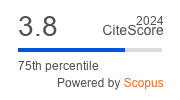Article | Open Access
Urban Microclimate Impact on Vertical Building-Integrated Photovoltaic Panels
| Views: | 1608 | | | Downloads: | 951 |
Abstract: The ongoing climate crisis and turbulence on the world stage has highlighted the need for sustainability and resilience in the development and maintenance of urban areas regarding climate comfort and energy access. Local production of green energy increases both the sustainability and resilience of an area. Traditionally, photovoltaic (PV) panels are deployed wherever the amount of sunlight is highest but lowering costs for PV panels makes them cost-effective even in colder climates. Within the broader umbrella of positive energy districts, façade mounted building-integrated PV panels in urban areas additionally present unique opportunities and challenges, as factors such as wind, solar irradiance, or nearby obstructions can have either a positive or negative effect on the performance of the PV panels. In this article, we aimed to answer the question: What factors inform the optimization of vertical PV panels? To answer this, we developed a method for the optimization of placement of PV panels. By building upon readily available weather data, local panel conditions were examined, and field-driven aggregation algorithm used to guide panel placement. Performance of the resulting panel configurations were then compared to a baseline case. Results indicate that our developed method helped mitigate negative impacts of the aforementioned factors, and often improved performance over baseline.
Keywords: building envelope; building-integrated photovoltaic panels; field-driven aggregation; form finding; positive energy districts
Published:
© Max Spett, Kevin Lau, Agatino Rizzo. This is an open access article distributed under the terms of the Creative Commons Attribution 4.0 license (http://creativecommons.org/licenses/by/4.0), which permits any use, distribution, and reproduction of the work without further permission provided the original author(s) and source are credited.


